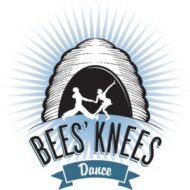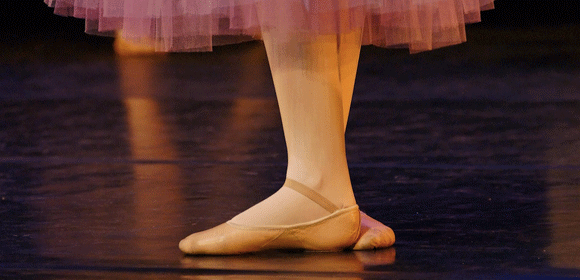In the months leading up to September the new partnership at the helm of Bees Knees Dance has been all abuzz. From finding our new home(s), to getting the word out, to deciding the new fee structure, we’ve done our best to really maintain what makes BKD an amazing school and introduction to the Swing world while also taking this opportunity to identify ways we could really up the ante.
Well, consider our ante upped. Our new fee structure is going to be full of rewards for the enthusiasts, our communication with the community is going to be more in-depth and consistent (starting with these blog posts), and our online registration is going to be easier and more reliable.
But when it comes to moving forward there’s no conversation more important to us than the curriculum and what we teach. At the end of the day: after all the business, number crunching and promotion, teaching is what we love, what we’re best at, and what we’re here to do.
The meeting on curriculum became our longest meeting to date at a whopping 7 hours (and the topic still requires more meetings to really tie it off) and mostly centred around student feedback and how to address it. Above all we’re hearing loud and clear that you guys have really been loving your time with us and learning a lot (we’ve loved our time with you!). We were overwhelmed with the stories of joy and success you have sent us and for that we’re so grateful.
When offered constructive feedback, it often came down to one of two main topics:
1. The level of students in the class can be disparate:
This can be a real challenge for student and teacher alike. It’s hard to work on a new move if your partner is struggling with some fundamental information from the class or level before. While classes are meant to be a fun learning process without a lot of pressure, we want to make sure that as students reach higher levels they are matched with others who have the same goals for their dancing and face similar challenges. This also helps our teachers get through material more quickly as they don’t need to split their focus between working on the day’s material as well as information from the previous level.
2. The progression of the classes can be confusing or in some higher level classes, seemingly arbitrary.
It feels good to know you’ve improved or learned enough to move on to a new class or level and we want to make sure that experience is always clear. There have been times in the past where a student is held in a level a little longer without a clear reason as to why. This was even more frustrating in higher level classes where there wasn’t really a standardized curriculum. This is something we really want to improve upon in the next iteration of the BKD curriculum by giving you clearer benchmarks among the levels as well as direct feedback on how to take your dancing to the next level (both literally and in the catch phrase sense).
.
DEFINING THE DANCER’S PROGRESSION
To break down how we were going to address these concerns we had to know not just what moves each level would learn, but what kind of dancer we wanted them to be as they progressed. Here’s a glance at what we came up with:
LEVEL 1
A level 1 dancer is just beginning their journey and is probably completely new to Lindy Hop. They are ready to learn the basic shapes, the basics of lead and follow and how to connect the moves they’re learning with simple transitions. They’re new to the music and the movement when they come to us, but when they progress to 1.5 they should be able able to dance through an entire song as well as be familiar with all the basic shapes and vernacular.
You kind of know you don’t have your sea legs yet, but you’re having too much fun to care. Being at social dances is overwhelming but also surreal and cool. You’re not sure which friends to tell you’re trying this out.
LEVEL 1.5
We thought it was really important to keep a 1.5 level (there was discussion about making the levels go 1, 2, 3..) because after level 1 you’re just starting to get good at the basic shapes, the core movement that is so important to this dance. A 1.5 dancer is learning to not just step where they’re supposed to but to look and feel like a swing dancer. Their focus is to strengthen their basics and their transitions, learning to really own the concept of social dancing’s ‘lead and follow’. Before moving on, a 1.5 dancer has learned new material and transitions, both in and out of the classroom, and has strong fundamentals in the 3 core disciplines of Lindy Hop: 8 Count, 6 Count and Charleston.
You have probably bought at least a couple of vintage clothing items and now your Saturday night completely belongs to the Dovercourt. Your “normal” friends are giving you weird looks when you bubble over with swing excitement. Swingcitement. ILHC jams are now the videos you watch at work when your boss isn’t around.
LEVEL 2
The level 2 dancer is ready for bigger moves. They have deeper questions about technique and connection and are invested in their own growth outside of the classroom. When a level 2 dancer moves on it’s because their arsenal has grown significantly and they’re obsessed with the perfect swing out and the perfect pulse as well as have delved into the dark arts of The Solo Jazz.
You now own vintage suspenders, think Benny Goodman is the bomb, and just went to your first big dance event. You should see a doctor, because you clearly have the bug. You’re also trying to drag your best friend from the real world into a class. What’s that Balboa thing?
LEVEL 3
The level 3 dancer is nearly ready to lead their own learning and in many ways already are. Fundamentals are more than an obsession and their vocabulary grows every time they watch someone else dance. While there are laughs at this level, it’s more serious and the discussions are longer. They’re also likely dabbling in other styles like Balboa and Tap and solo jazz is being incorporated in their dance in a serious[ly fun] way.
Nina Gilkenson swivels haunt your dreams, you’re trying to get your Frankie biography signed by anyone from that era, and you argue over a pint at Grossman’s over who brought it more: Artie Shaw or Benny Goodman.
WHAT WE’RE GOING TO DO ABOUT IT
With this in mind we’ve developed a more expansive early curriculum with more specific focuses. Now levels 1 and 1.5 will both have a 3 month curriculum. In Lindy Hop 1 (LH 1) one of the months will include 8 count movement like the swing out and lindy circle. Another will focus on 6 count movement such as change of places and the six count pass. The third month will focus on charleston including face to face, side by side, and tandem charleston. In LH 1.5 we will focus on technique, transitions and new variations of the basic shapes from each month.
Before moving on to level 2 you will also be required to do an assessment with your teacher. This will give us an opportunity to touch base in a more personal way and if there is a reason we want you to hold off moving on to level 2 it will be clearly explained in the review. This means no more endlessly cycling through a level without knowing what would get you to the next and also ensures that when you reach that next tier of classes that you are working with dancers at your level. This also introduces you to really direct feedback early on in your development as a dancer, which is invaluable.
Our level 2 classes will be longer still, with a 6 month curriculum* that will now cycle in the same way as the 1 and 1.5 classes always have (a repeating curriculum that can be entered on any month). When moving to level 3 you will be required to complete the same review process as before, which will determine what you should work on to move on, if anything. It should be noted that we also do not believe in the ‘infinite’ curriculum. While we haven’t officially decided on a final level to offer, we do believe that at some point regular classes are not the best way for a dancer to improve and we will be offering private lessons and masterclass workshops for those who have reached that point in their development. We also highly recommend travelling to big dance events (where some of the best dancers in the world gather to teach, both in workshops and private lessons), joining performance troupes and engaging in practice sessions with other dancers at your level.
Above all, these classes should follow the arc of the dancer themselves. Early levels will be about fun and building confidence and vocabulary. As you become more serious about your dancing, so will we, focusing on technique, musicality, styling, and ever more challenging moves and shapes. Our goal is that you come for the fun and you stay for the overwhelming satisfaction of continually growing and learning in the greatest community on the planet: swing dancers.
As always, your feedback here and throughout the process is VERY welcome.
Love, dancing, and music,
Yam
*Tentative, still being discussed.












 VIEW 2 PHOTOS
VIEW 2 PHOTOS From the jaw-dropping flash of The Nicholas Brothers to the sophisticated beauty of Rogers & Astaire, from the cool swagger of Gene Kelly to the down n’gritty style of Gregory Hines, tap dancing has dominated stage, screen and street corners for generations. Unleash your inner rhythm-ramble and free your feet-beat at Bees Knees Dance’s new tap classes!
From the jaw-dropping flash of The Nicholas Brothers to the sophisticated beauty of Rogers & Astaire, from the cool swagger of Gene Kelly to the down n’gritty style of Gregory Hines, tap dancing has dominated stage, screen and street corners for generations. Unleash your inner rhythm-ramble and free your feet-beat at Bees Knees Dance’s new tap classes! Whether it’s your first tap experience, or you’ve tap danced before, you’ll be in great hands (and feet) with instructor Kris Light for this experimental month of classes!
Whether it’s your first tap experience, or you’ve tap danced before, you’ll be in great hands (and feet) with instructor Kris Light for this experimental month of classes! When you compete, you put yourself out there in a way that is specifically asking to be criticized, ranked, and “judged” in every sense of the word. That can make you dance very differently than you might have danced from the pure feelings of inspiration. It becomes about what the judges will like, not necessarily about what you actually feel that needs to be expressed from the inside out. Particularly in a social dance competition like Strictly, it’s about showing the money. To some extent that’s also true of a Jack n’ Jill division, though then the surprise partnering skills come in to play. When you’re competing, it’s very hard to give the music and your true authentic feelings the attention that they deserve because your attention is invariably focused on pleasing other people. The whole “dance like no one is watching” thing which suggests dancing as is true to yourself… yeah, that kind of goes out the window.
When you compete, you put yourself out there in a way that is specifically asking to be criticized, ranked, and “judged” in every sense of the word. That can make you dance very differently than you might have danced from the pure feelings of inspiration. It becomes about what the judges will like, not necessarily about what you actually feel that needs to be expressed from the inside out. Particularly in a social dance competition like Strictly, it’s about showing the money. To some extent that’s also true of a Jack n’ Jill division, though then the surprise partnering skills come in to play. When you’re competing, it’s very hard to give the music and your true authentic feelings the attention that they deserve because your attention is invariably focused on pleasing other people. The whole “dance like no one is watching” thing which suggests dancing as is true to yourself… yeah, that kind of goes out the window. Of course, there are always very high levels of competitors that are good enough and secure enough in their own dancing that they can get past all of these issues and really do themselves and the dance some serious justice. That’s why I do love the invitational Jack n’ Jills so much at events like ILHC and other big Lindy Hop competitions. Because the dancers that are participating really don’t have anything to prove. But in most competitions, people are doing the exact opposite. They’re seeking approval and validation. And to me, Lindy Hop should never be about what anyone else thinks.
Of course, there are always very high levels of competitors that are good enough and secure enough in their own dancing that they can get past all of these issues and really do themselves and the dance some serious justice. That’s why I do love the invitational Jack n’ Jills so much at events like ILHC and other big Lindy Hop competitions. Because the dancers that are participating really don’t have anything to prove. But in most competitions, people are doing the exact opposite. They’re seeking approval and validation. And to me, Lindy Hop should never be about what anyone else thinks. There are people who can compete and have fun no matter if they place well or not in the competition. There are people who can really just enjoy the experience for just that, an experience. But the fact is that many people who compete have a very emotional, stressful and often disappointing experience that can affect how they feel about Lindy Hop beyond the time of the event. For every person who becomes inspired to push their dancing after a competition, there is someone who becomes discouraged, drops out or burns out from the emotional rollercoaster of competing.
There are people who can compete and have fun no matter if they place well or not in the competition. There are people who can really just enjoy the experience for just that, an experience. But the fact is that many people who compete have a very emotional, stressful and often disappointing experience that can affect how they feel about Lindy Hop beyond the time of the event. For every person who becomes inspired to push their dancing after a competition, there is someone who becomes discouraged, drops out or burns out from the emotional rollercoaster of competing.
 ~Mandi Gould
~Mandi Gould